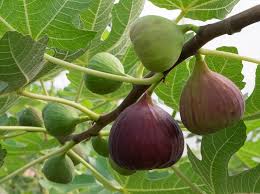
Effective Disease Management of Fig Trees
Share
Introduction
Fig trees (Ficus carica) are beloved for their delicious fruits and aesthetic appeal in gardens. However, like all plants, they are susceptible to various diseases that can compromise their health and productivity. Proper disease management is crucial for maintaining the Vigor and yield of fig trees. In this blog post, we will explore common diseases affecting fig trees, how to identify them, and effective management strategies.

Common Fig Tree Diseases
Fig Mosaic Virus
Symptoms:
Yellow spots on leaves, distorted leaves, and reduced fruit size.
Management:
Use disease-free planting material.
Remove and destroy infected plants.
Control insect vectors such as aphids.
Leaf Spot (Cercospora spp.)
Symptoms:
Small, dark brown or black spots on leaves that may merge to form larger lesions.
Management:
Ensure good air circulation around the tree by proper pruning.
Apply appropriate fungicides as a preventive measure.
Remove and destroy fallen leaves.

Root Knot Nematodes (Meloidogyne spp.)
Symptoms:
Knobby, swollen roots; stunted growth; yellowing leaves.
Management:
Rotate crops to non-host species.
Use nematode-resistant rootstocks.
Apply organic amendments such as compost to improve soil health.

Anthracnose (Colletotrichum spp.)
Symptoms:
Dark, sunken lesions on fruits and leaves, premature fruit drop.
Management:
Prune and destroy affected plant parts.
Use copper-based fungicides.
Avoid overhead irrigation to reduce leaf wetness.
General Disease Management Tips
Regular Monitoring: Inspect your fig trees regularly for early signs of disease.
Proper Sanitation: Keep the area around fig trees clean by removing fallen leaves and fruit.
Pruning: Prune trees to improve air circulation and remove diseased plant parts.
Water Management: Water fig trees at the base to avoid wetting the foliage, which can promote disease.
Soil Health: Maintain healthy soil through proper fertilization and organic amendments. By adopting these practices, you can significantly reduce the incidence of diseases and maintain healthy, productive fig trees.
Conclusion
Proper disease management is essential for maintaining the health and productivity of fig trees. By being vigilant and adopting proactive measures, you can minimize the impact of common diseases such as Fig Mosaic Virus, Leaf Spot, Root Knot Nematodes, and Anthracnose. Regular inspections, proper pruning, good sanitation practices, and maintaining soil health are key strategies for keeping your fig trees thriving.
FAQs
How often should I inspect my fig trees for diseases?
Regular inspections are recommended, especially during the growing season. Weekly checks can help you spot early signs of disease and take prompt action.
Can I use homemade remedies to treat fig tree diseases?
Some homemade remedies, like neem oil or baking soda solutions, can be effective against certain fungal diseases. However, it’s often best to use commercially available fungicides that are specifically formulated for plant diseases.
What is the best time to prune fig trees to prevent diseases?
The best time to prune fig trees is during the dormant season, typically late winter to early spring, before new growth begins. This helps to reduce the risk of spreading diseases.
